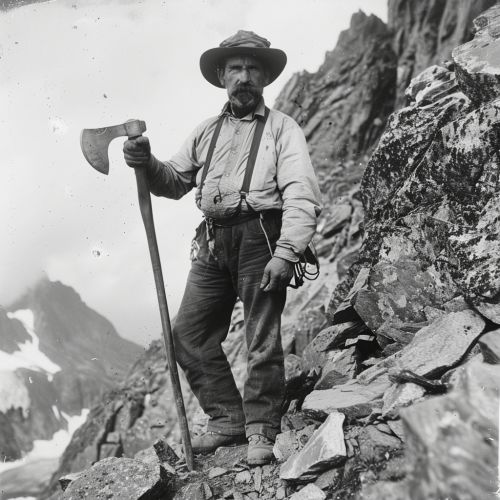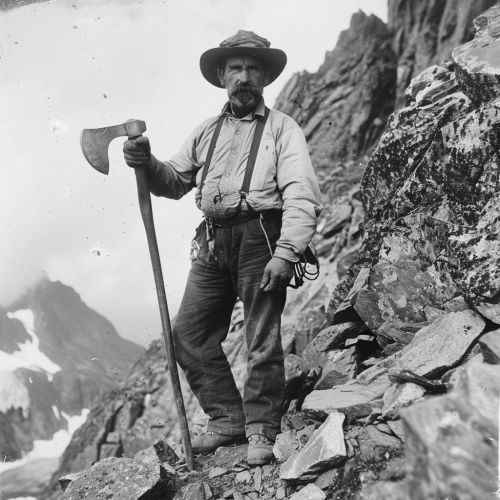Edward Whymper
Early Life and Education
Edward Whymper was born on April 27, 1840, in London, England. He was the second of eleven children in a family of artists and engravers. His father, Josiah Wood Whymper, was a noted wood-engraver and watercolourist, which greatly influenced Edward’s early interest in art and the natural world. Whymper received his education at home, where he was trained in drawing and engraving by his father. This early training honed his skills in observation and detail, which would later prove invaluable in his mountaineering and exploration endeavors.
Mountaineering Career
Edward Whymper is best known for his pioneering achievements in mountaineering. His most notable accomplishment was the first ascent of the Matterhorn on July 14, 1865. The Matterhorn, located in the Alps on the border between Switzerland and Italy, had long been considered unclimbable due to its steep and treacherous slopes. Whymper’s successful ascent marked a significant milestone in the history of mountaineering and opened the door for future climbers to tackle other challenging peaks.
The Matterhorn Ascent
Whymper’s ascent of the Matterhorn was a culmination of several years of attempts and failures. He first attempted to climb the mountain in 1861 but was turned back by bad weather and difficult conditions. Over the next few years, he made several more attempts, each time gaining more experience and knowledge about the mountain’s terrain. In 1865, Whymper assembled a team that included guides Michel Croz and Peter Taugwalder, as well as fellow climbers Charles Hudson, Lord Francis Douglas, and Douglas Hadow. The team successfully reached the summit on July 14, 1865, but the descent ended in tragedy when a rope broke, causing four members of the party to fall to their deaths.


Other Notable Ascents
In addition to the Matterhorn, Whymper made several other significant ascents in the Alps. He was the first to climb the Aiguille d'Argentière, Mont Dolent, and the Grandes Jorasses. His achievements in the Alps earned him a reputation as one of the leading mountaineers of his time. Whymper also made notable contributions to the exploration of the Andes in South America, where he climbed several peaks, including Chimborazo and Cotopaxi.
Contributions to Science and Exploration
Whymper’s contributions to science and exploration extended beyond his mountaineering achievements. He was a keen observer of the natural world and made detailed records of his expeditions. His observations included geological formations, glaciology, and the effects of altitude on the human body. Whymper’s meticulous documentation provided valuable data for scientists and researchers studying these fields.
Publications
Whymper was also a prolific writer and illustrator. His most famous work, "Scrambles Amongst the Alps," published in 1871, is considered a classic in mountaineering literature. The book provides a detailed account of his climbs in the Alps, including the first ascent of the Matterhorn. Whymper’s writing is noted for its vivid descriptions and detailed illustrations, which bring his adventures to life for readers. He also published "Travels Amongst the Great Andes of the Equator" in 1892, which documents his explorations in South America.
Later Life and Legacy
In his later years, Whymper continued to be active in the mountaineering community, though he focused more on writing and lecturing about his experiences. He traveled extensively, giving lectures in Europe and North America, and sharing his knowledge and passion for mountaineering with a wider audience. Whymper’s legacy is preserved in the many peaks he climbed and the detailed records he left behind. His pioneering spirit and contributions to the field of mountaineering continue to inspire climbers and adventurers to this day.
